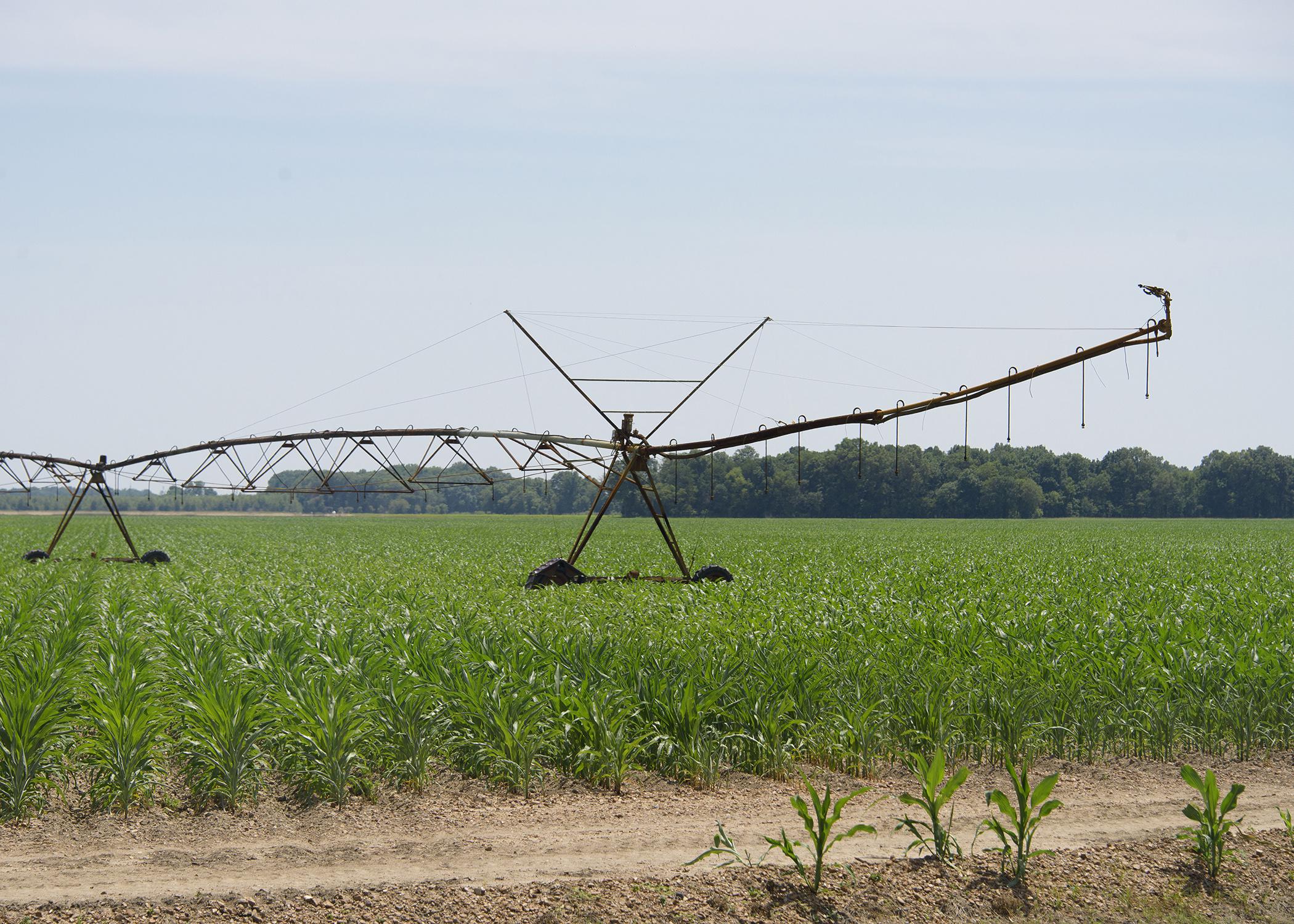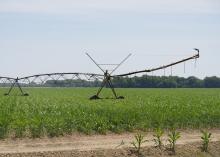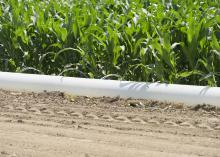MSU irrigation research urges moisture sensor use
STARKVILLE, Miss. -- Water management specialists with Mississippi State University have extensive advice for those implementing different irrigation techniques, but they all agree that using soil moisture sensors is the best way to irrigate.
At the Row Crop Short Course in December, MSU Extension Service specialists presented a variety of information and research findings about furrow and pivot irrigation. Each year, data collected from MSU’s ongoing irrigation research helps growers make management decisions.
Drew Gholson, Extension irrigation specialist, discussed furrow irrigation that allows fields to be irrigated faster and with less water used than with traditional overhead irrigation.
“About 83% of Mississippi’s irrigated acres use furrow irrigation, while the other 12% uses center pivot,” Gholson said.
Soybean and corn are overwhelmingly furrow-irrigated, and this is almost exclusively practiced in the Delta. Furrow irrigation is made more efficient when growers install soil moisture sensors and use the data supplied by these devices to initiate irrigation.
“And about 30% of Mississippi farmers use soil moisture sensing in their fields,” Gholson said. “The U.S. adoption rate is 13% for soil moisture sensors.”
Dave Spencer, an Extension pivot irrigation specialist, discussed irrigation thresholds, or when soils are dry enough to initiate an irrigation, irrigation rates and the impact that soil type has on irrigation. The research he conducts is on fields in Brooksville and Stoneville.
“Furrow irrigation has been the predominant irrigation method for a couple of decades,” Spencer said. “The shift away from overhead irrigation to furrow irrigation was accelerated when Mississippi’s cotton acres were replaced with corn and soybean.”
Failure to irrigate on time leads to yield loss.
“We found we need to initiate overhead irrigation much more quickly than with furrow irrigation and to keep our soils a lot wetter,” Spencer said.
Spencer said MSU’s irrigation research established thresholds for corn and cotton, and soybean fields can follow the same recommendations for corn.
Under pivot irrigation, those growing corn or soybeans need to keep the soil moisture content around -40 centibars, which is slightly drier than field capacity, the point at which all gravity water has drained out of the soil.
“At our research plots in Brooksville, we used about 7.5 inches of water on average over the past three years to keep it at -40 centibars,” Spencer said. “In Stoneville, we used even more water, averaging over 11 inches of water to maintain the soil moisture at -40 centibars.”
Spencer said light-textured Delta soils need a soil moisture sensor installed at 3 inches deep rather than 6 inches to get an accurate picture of the soil moisture available in the upper profile.
He said research fields growing cotton saw a big response over every irrigation level, with all irrigated fields outperforming dryland fields.
“Those yield responses were not much different from 30 to 120 centibars of moisture,” Spencer said. “That tells me cotton is very resilient. There was only about 200 pounds yield difference between 30 and 120 centibars of moisture.”
Different soil types require different soil moisture applications, and Spencer showed proof with photos of cotton growing on two fields at exactly the same measured soil moisture. One field received .3 inches of rain that did not show up on the sensors buried 6 inches deep while the other field received no rain. The field with rain had healthy looking leaves, while the field with no rain had curled leaves, despite the sensors reading the same.
Spencer said to use sensors to see the effectiveness of an irrigation, place the units at four different depths.
“It’s very difficult to push water deeper than 6 inches in silt loams, so you want to see the stair steps from higher readings on the shallow sensors to less moisture showing in those sensors buried deeper,” he said. “On the clay soils, it fills from the bottom up, so you will see low soil moisture numbers higher up in the soil profile than is read at lower levels.”
Knowing the type of soil and the soil moisture reading gives an accurate idea of how much water is actually available to plants per square foot of soil.
“Different soils hold different inches of water available to plants,” he said. “Two different soils may have a few days’ difference in time when water is available to plants and when they get stressed from drought.”
Overhead irrigation should be initiated on soils with lower water-holding capacity first, and Spencer said when infrastructure upgrades are planned, upgrade those serving fields with lower water-holding capacity first.
“Don’t spend your money first on the soils that hold more water and be very aggressive in your irrigation thresholds,” Spencer said.
MSU Extension began offering the Master Irrigator class to interested farmers in 2024. The program has an online component that starts in October and must be completed by Jan. 31. Participants then attend two days of in-person training in February to receive a certificate of completion.
Everyone who participates learns how to install and use soil moisture sensors to analyze the amount of water available in their soil and know when to initiate irrigation most efficiently. Additionally, some companies give a discount on soil moisture sensors and other instruments to those who complete the course.
Learn more about MSU’s research in irrigation efficiency, water conservation and the Master Irrigator program at







